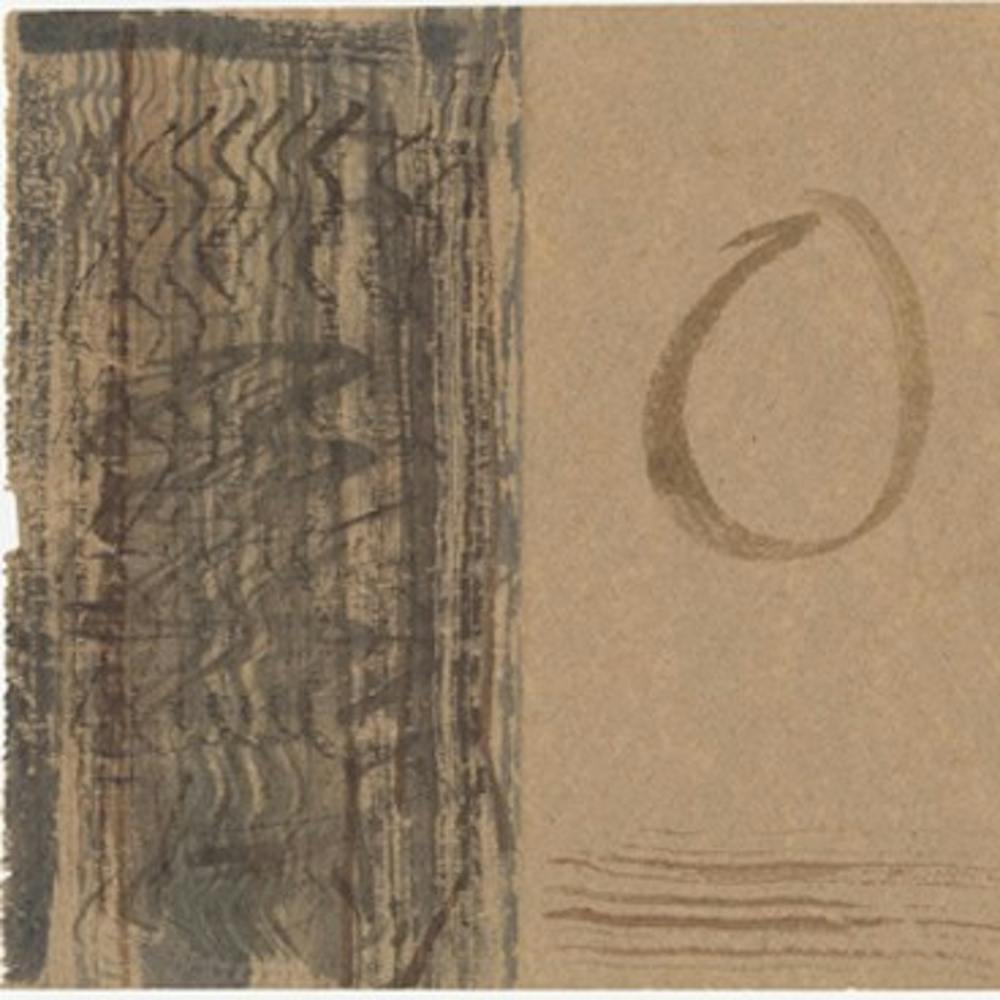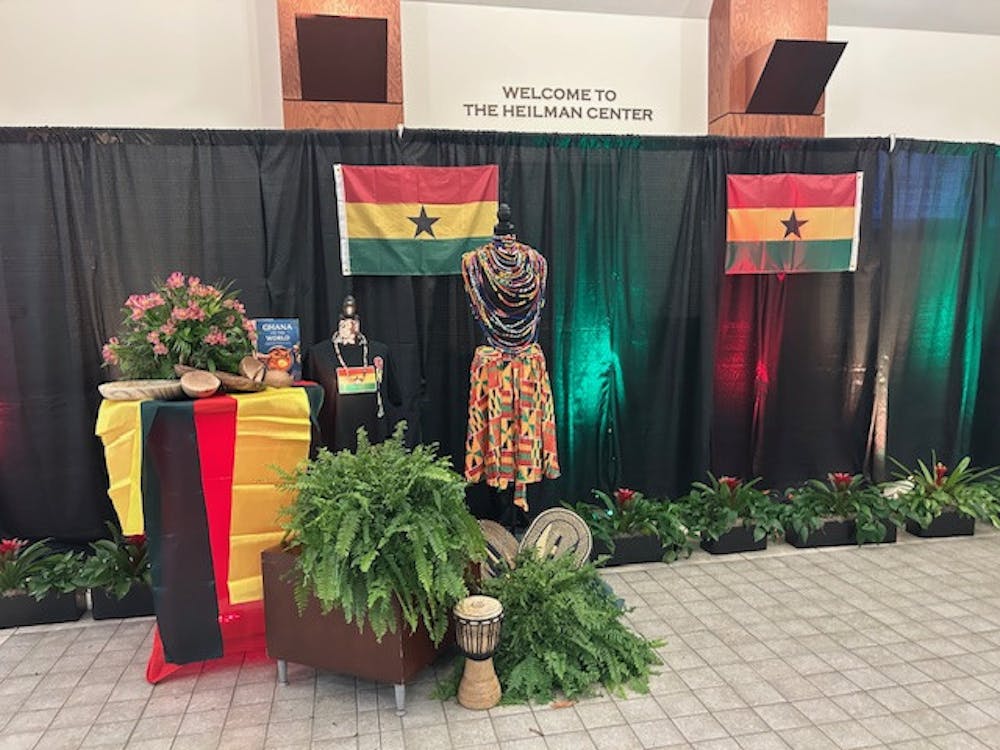The work of composer and artist John Cage is the common thread between a series of art and meditation events taking place throughout the semester, including an exhibition of his watercolors, titled "John Cage: Zen Ox-Herding Pictures," on view at the Joel and Lila Harnett Museum of Art and the Harnett Print Study Center at the University of Richmond.
Cage was one of the seminal figures of the postwar avant-garde, particularly known for his nonstandard use of musical instruments and his reliance on chance, rather than deliberate decisions, to shape his compositions.
"His ideas are still new and refreshing," said Stephen Addiss, professor of art history and co-curator of the exhibit. "It's a breath of fresh air at a conservative college such as ours."
The exhibit features 55 watercolors on small paper towels paired with short phrases, which invoke the narrative of Zen Ox-Herding, which is an ancient East Asian parable. It serves as a metaphor for the path to enlightenment, and Cage was deeply influenced by it throughout his life.
The exhibit has been on view since Oct. 2, 2009 and will be until April 7, 2010. The other events occurring in conjunction with the exhibit include a meditation workshop from 4 to 6 p.m. on Jan. 28, led by Josho Pat Phelan, the abbess of the Chapel Hill Zen Center in North Carolina, and a lecture and reception titled "Zen Practice: Meeting Each Moment" from 7 to 9 p.m. on Jan. 28 at the Modlin Center for the Arts. From 3 to 5 p.m. on Feb. 4, Ray Kass, co-curator of the exhibit and a professor of art at Virginia Tech, will lead an art workshop, titled "Breathing Lines."
Kass has held on to the paper towel watercolors since 1988, when Cage created them during a visit to the Mountain Lake Workshop in Virginia. Cage was tracing the contours of stones for the eight works of "New River Watercolors: Series IV" and testing the brush strokes beforehand on ordinary brown paper towels. Kass suggested that the test sheets, with their earthy colors on the brown hue of the paper, could be art in themselves. Cage agreed, but it wasn't until 2009 that the watercolors were combined into the never-before-seen exhibit at the Modlin Center.
"I really like his use of paper and choice of color," said Hayley Swinson, a senior. "It makes me think of cave paintings. But at the same time, it's like he's daring someone to deny it as art."
Kass teamed up with Addiss, who was a student of Cage's at The New School in Manhattan in the late 1950s. Addiss spent several months selecting short phrases from Cage's writings to accompany the watercolors and to illustrate the Zen ox-herding parable.
"Cage's poetry was often a compilation of words from other sources," Addiss said. "He liked to think that they weren't used up just by being used once."
The exhibit features both the paper towel watercolors and one of the eight works from "New River Watercolors: Series IV." It has inspired collaborative programming among the music, art, theater and dance departments, intending to celebrate Cage's avant-garde conceptions of art.
Enjoy what you're reading?
Signup for our newsletter
From 7 to 8 p.m. on March 2, Laura Kuhn, the director of the John Cage Trust, will give a lecture titled "John Cage and the Influence of Far Eastern Philosophies" in the Westhampton Reception Room. The departments of music, dance and theatre will put on a Cage Celebration Performance in Camp Concert Hall from 7:30 to 9 p.m. on March 24. It will feature "4'33"," his most controversial and well-known omposition, in which not a single note is played, and the audience is instead spurred to listen for the music of ambient sounds.
"He likes to get people to reflect on things themselves," said Heather Campbell, curator of museum programs. "He wants people to think. Not only was he showing art, but it was about getting the audience participating and interacting."
The Cage celebrations will culminate in a "Happening" on April 1. Cage's penchant for spontaneity sparked the concept, which involves impromptu campus-wide celebrations and performances.
"We won't tell people exactly what's happening, but we'll give them a timeframe," Campbell said. "There might be a poetry reading in the Commons between 1 and 3 [p.m.] or a musical performance at the dining hall. That way, everybody can participate."
Contact staff writer Maria Ribas at maria.ribas@richmond.edu
Support independent student media
You can make a tax-deductible donation by clicking the button below, which takes you to our secure PayPal account. The page is set up to receive contributions in whatever amount you designate. We look forward to using the money we raise to further our mission of providing honest and accurate information to students, faculty, staff, alumni and others in the general public.
Donate Now



